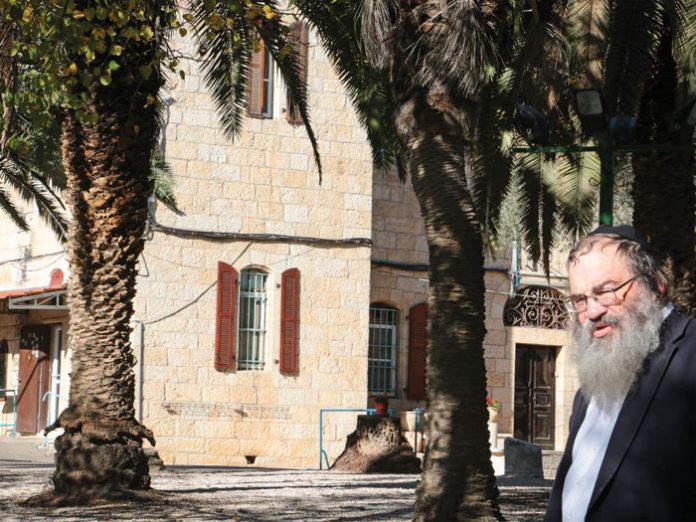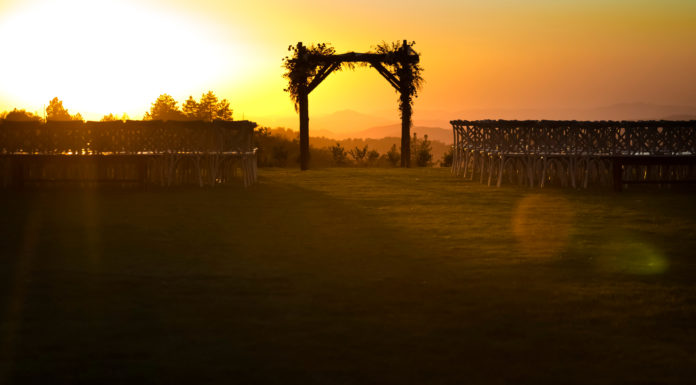On a hill overlooking the main road from Shaar HaGai to Jerusalem lies a small chareidi town called Kiryat Ye’arim, also known by its other name, Telz Stone. Over the centuries, it has been given numerous names and has been the site of many historic events. Not that long ago, it was the peaceful home of chareidi families who had come to Israel from the United States, South Africa and England. More recently, however, it has become a popular destination for young chareidi couples seeking better housing options, which has led to a surge in construction. With the upgrades to the Jerusalem highway and the opening of the Harel tunnels, the commute to the Jerusalem was greatly improved, and the demand for housing in Kiryat Ye’arim-Telz Stone jumped.
Much of the history of the region and its fascinating incarnations is less well known even to its residents, but over the past few years there have been a number of remarkable findings that have sparked fierce debate among scholars and researchers.
One of these finds is what appears to be a citadel built by Yehudah Maccabee, the commander of the Chashmona’im, who fought against the Greeks. The fortress was partly responsible for the Maccabees’ victory, which eventually led to the liberation of Jerusalem, the purification of the Beis Hamikdash, the rededication of the Mizbei’ach and the reintroduction of the korbanos—the reason for the festive holiday of Chanukah.
“This is an exciting discovery,” says Torah scholar and renowned historian and researcher Rabbi Yehudah Landi, who lives in a neighboring community and is taking me on a tour of the area. “In this place, thousands of years after it was built, it is possible to touch the very same fortress built by Yehudah Maccabee and understand the circumstances that make it so special.”
Kiryat Ye’arim, where there is now a vibrant religious community, is located near the Arab village of Abu Ghosh, at the foot of a tall mound that is basically the burial site of the ancient city of Kiryat Ye’arim.
Immediately after leaving modern-day Kiryat Ye’arim, we pass a large military antenna on the side of the road, which isn’t surprising considering that we are in a military zone. The road then wends its way to Abu Ghosh and ascends upward toward a tall, fenced-off mound—a tel in Hebrew—that is situated behind a locked iron gate. Only after several phone calls does someone open the gate and allow us to proceed. With great difficulty, we go up a steep incline to a large courtyard in the shadow of a towering stone structure.
Here, on the top of the tel, is a church and a pilgrims’ lodge that once served as a French monastery. We are welcomed by the Frenchman who manages it. Ever since the discovery of this archaeological site on his property, he is used to visitors coming around to take a look.
The story of this tel and the structure on it is interwoven with that of Kiryat Ye’arim and the name Telz Stone. But the history of this place goes back much further, to the time of Yehoshua and the conquest of Eretz Yisrael.
“Even today,” explains Rabbi Landi, “we can understand the importance of this location as it sits on the road that connects the low-lying areas with Jerusalem. There are actually two ancient roads that come together. One of them overlaps the road that goes from the Ayalon Valley to Jerusalem, which serves today as the central artery into the Holy City. It is a very ancient thoroughfare, and you can still see sections of the paved road from Roman times. The other route goes up from Kiryat Ye’arim to Givon and meets the road going to Beit Horon in the north.”
As mentioned in Tanach, one of those routes was used by Pharaoh Shishak, the king of Egypt. During the reign of Rechavam, the son of Shlomo Hamelech, Shishak waged war against Israel and conquered the fortresses along the way to Jerusalem. One of the cities mentioned on the Egyptians’ list of conquests is Kiryat Ye’arim.
Due to the strategic importance of the location, the ancient Givonim established a city here whose name was believed to be Kiryat Baal (or Baala), after their pagan idol, as mentioned in Sefer Yehoshua. Since it’s a mitzvah to erase the memory of avodah zarah, bnei Yisrael renamed the city Kiryat Ye’arim when they entered the Land, after the many forests in the surrounding area (ya’ar means “forest”), erasing the name of Baal.
Kiryat Ye’arim also served to demarcate the border between the tribe of Yehudah and the tribe of Binyamin. Shlomo Hamelech fortified the city, and during the time of the Kingdom of Yehudah, it was the regional capital of a large district extending from Nachal Sorek to the border of the kingdom.
“This tel,” says Rabbi Landi, “is the place where the aron containing the luchos was brought from Beit Shemesh to Shmuel Hanavi. Tanach relates that Bnei Yisrael took the aron to the battlefield to ensure a victory, but they were defeated and the aron fell into the hands of the Philistines. However, possession of the aron brought disease and humiliation to the Philistines, who decided for their own welfare to send it back to Jerusalem.





















